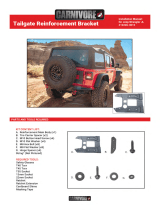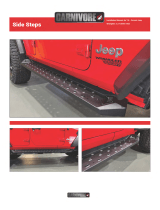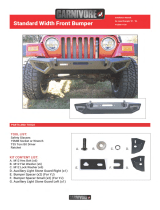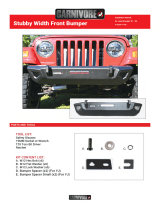Page is loading ...

InstructIons
& InformatIon
200 LItre aerobIn
tHanK You for HeLPInG maKe tHe
WorLD a more sustaInabLe PLace
QuestIons
anD
ansWers
Global Environment Management (FZC),
PO Box 9566,
Executive Suite Y1-016,
SAIF Zone,
Sharjah, United Arab Emirates.
P: +971-6-5571661
F: +971-6-5571490
W: www.aerobin400.com
Email : [email protected]
4
Green (Wet) materIaLs broWn (DrY) materIaLs Do not use…
> Food scraps > Leaves and small twigs > Oils
> Citrus and onions (Cut up) > Crumpled into balls - either newspaper or oce paper > Meat
> Vegetable peelings > Roots or branches, finely chipped or mulched > Fish
> Lawn clippings* and weeds > Long yellow grass > Wood
> Green garden cuttings > Pea Straw > Glossy magazines
> Coee grounds > Ash
> Tea-leaves and tea bags > Faeces from meat eating animals
> Dairy
* (note: “Sir Walter Bualo” grass is very moist,
so mix it with more dry materials)
A400_246
WHAT CAN GO IN
C I P A
F I I?
In most jurisdictions it is illegal
to put carnivore (meat eating
animal) faeces in the Aerobin®.
However, herbivore (grass/
plant eating animal) manure,
e.g. horse, cattle, goat, sheep,
poultry manure can be included.
All animal faeces may carry
pathogens, as may all finished
compost, therefore handle
strictly according to safety and
hygiene guidelines.
C I ?
It is not recommended. Hot Ash
will damage the plastic and void
the warranty. Too much ash
will slow down the composting
process.
D
?
Yes, the Aerobin® breaks down
all organic waste including
newspaper and oce paper,
which must be scrunched
up into balls before loading
into the Aerobin. If adding
a lot of newspaper without
wet materials, moisten first.
Cardboard strips will also
breakdown and will help to
provide structure (improving air
flow) within the biomass you are
loading into the Aerobin.
C I P D
P ?
Dairy products can give o
an unpleasant odour when
decomposing, and should only
be used if the Aerobin® is in
a location where the pungent
smell will not oend anyone.
D
?
Some sludge may build up
over time, the residue of small
particles of organic material.
It is recommended that you
completely empty the liquid
fertiliser from the tank once or
twice a year, attach a hose to
the outlet and back flush the
contents for 3 minutes.
HOW THE
AEROBIN®
WORKS
D A
C L® ?
No. The Aerobin® has a static
Aeration Core or Lung® allowing
passive ventilation throughout
the whole composting mass. No
turning or churning is required.
D I
A® ?
No. The heat inside the Aerobin®
comes from the micro-organisms
breaking down the organics, not
from the sun.
H
?
3 years against manufacturing
or material defects.
I
?
University tests have proved
compost from the Aerobin® is
superior to compost from other
leading international compost
units, when contents are mixed
evenly and at the right moisture
level. The tests achieved
Rottegrad 4 standard (one step
down from the top level) after
just 13 weeks. The test indicated
Rottegrad 5 standard would
be achieved given a little more
time
The Aerobin® is a finely tuned
engineered product which,
when treated with respect,
should give you years of
sustainable composting.
POSITIONING YOUR
AEROBIN®
Must be installed on a level,
firm and even surface - large
pavers or concrete are best,
ensure the whole underneath
surface Is supported as
the Aerobin® can weigh
up to 200kg. Choose your
spot carefully as it is not
recommended that you move
the Aerobin® once you start
using it. If you need to move
the Aerobin®, you will need to
remove the matter inside first.
GETTING STARTED
Please see the document that
has come with your Aerobin
titled ‘Aerobin – Composting
Tips’ – please read and apply
the recommendations that have
been provided to optimize the
performance of your Aerobin.
Or visit our website
www.aerobin400.com and go
to Info & Resources and click
on Composting Tips.
WHAT CAN GO
IN THE BIN?
Most organic waste, keeping
an even mix of Green (wet) and
Brown (dry). See chart below
MOISTURE LEVEL
The moisture level of your
green materials should be that
of a damp sponge. If you wring
the material you should get a
few drops of moisture. If there
are no drops or it appears too
dry, add a little water to the
materials BEFORE you add to
the Aerobin®. If it’s dripping
wet, add more dry material
to even the moisture out.
Dropping food scraps into the
bin daily helps keep it moist.
COMPOSTING:
HOW IT WORKS
Composting is a natural
biological process that releases
nutrients from organic matter,
and produces fertile humus.
The process requires air,
moisture, warmth, organic
matter and micro-organisms
(fungi, bacteria and very small
animals, which digest organic
matter).
Decomposition starts at
quite low temperatures. The
insulation in the Aerobin®
speeds up this process and
the materials breathe through
its patented aeration Lung®
to provide a more sustainable
composting process.
Any soil type will become
richer, easier to work and more
friable by adding compost,
which will also make the soil
water retentive, so you won’t
need to water the garden as
much. The nutrients will feed
the plants. You will see visible
improvement in plant growth
and condition in your soil if you
regularly apply compost.
WHEN COMPOST
IS IT READY
> Within three to six months.
Allow more time in cold
weather or if only adding
smaller amounts of material
every so often
> Inspect material via either
side access door
> It is ready when the material
is evenly textured, slightly
moist and dark
> Use a small spade or garden
trowel to remove mature
compost
> Take care not to damage
the central aeration core
or lung®
ORGANIC LIQUID
FERTILISER
The base of your Aerobin®
contains a chamber to
retain excess moisture from
composting material. This
organic liquid fertiliser is
a mixture of moisture and
minerals from the decomposing
organic materials, and
the naturally occurring
micro-organisms that help
composting occur.
This valuable organic liquid
fertiliser can be used on your
garden and pot plants to feed
the plants, 1 part organic liquid
fertliser to 20 parts water. You
will see visible improvement in
plant growth and condition in
your soil.
Some people prefer to attach
a length of 13mm diameter
polypipe to the outlet at the
bottom of the unit, with a tap
fixed on the end of the pipe
to access the organic liquid
fertiliser (see “Accessing
Compost” in the Frequently
Asked Questions section).
WEEDS AND SEEDS
When used correctly the
Aerobin® kills weeds and
seeds by heat generated
through micro-organic activity
in the bin. This activity raises
the temperature within the
bin. Even in cooler weather
the process in the thermally
insulated bin generates heat
and breaks down compost,
which is why you don’t need to
place the Aerobin® in the sun.
SAFETY AND
HYGIENE*
Organic household and garden
waste material, compost and
healthy soil contains living
micro-organisms, including
bacteria, fungi and protozoa.
Depending upon the materials
you use, it may also contain
chemical, mineral and fertiliser
additives.
RISK
Inhalation of dust and/
or liquid mists may irritate,
inflame or sensitise the nose,
throat and lungs resulting in
illnesses ranging from hayfever
or asthma to pneumonia
(e.g. Legionnaire’s disease)
or pneumonia-like illnesses.
Direct contact with this material
or its dust and/or liquid mists
(bio-aerosols) may cause skin
irritation (dermatitis), and skin
or eye infection or irritation.
People particularly at risk
are those suering from asthma
or allergies, and those whose
immune defence systems are
compromised.
SAFETY
A
:
> Avoid contact with
eyes and skin.
> Avoid breathing or ingesting
dust and/or liquid mists
(bioaerosols).
> Wear suitable protective
clothing and standard duty
gloves.
> If exposed to dust and/or
liquid mists, also wear dust
resistant eye protection and
particulate respirator.
> Wash thoroughly
immediately after
handling decomposing
materials. Wash work
clothes regularly.
FIRST AID
Irrigate eyes with plenty of
water for 10 minutes. Wash
skin with soap and water.
Seek medical attention for
any persistent skin, eye or -
respiratory symptoms.
ACCESSING
COMPOST
H I ?
Through the two side access
panels in the bottom chamber.
Using the handle, lift the panel
vertically to unlock, then pull
toward you. When replacing
it, ensure side access panel
locks back in place to minimise
odours and keep out pets and
pests. Listen for the click when
it locks in.
H
?
5 litres.
H I
?
Drain the liquid fertiliser from
the outlet at the base of the
Aerobin® into a low-sided
container. The outlet pipe,
which turns, has an integrated
vale. When the outlet pipes is
at the bottom position the tap
is “open”, allowing the liquid
fertiliser to flow and when the
outlet pipe is at the top position
the tap is “closed” (see diagram
on page 1).
It Is recommended that you
turn the valve several times to
loosen the barrel before putting
material Into
the Aerobin®.
Some people prefer to attach a
13mm diametre polypipe, with
a tap fixed on the end of the
pipe. This way the outlet can
be left on and the tap used
to stop and start the flow. If
the outlet becomes blocked
simply use a skewer or piece of
wire to remove blockage from
the valve, whilst in the open
position.
Please carefully follow the
safety and hygiene guidelines
in this leaflet when handling the
fertiliser.
C I ?
Plenty of airflow is required, and
if kept indoors a composting
odour may be evident, so it
should be kept outdoors.
Can I get spare parts for the
Aerobin®?
The Aerobin® is exceptionally
resilient and should not break,
however, replacement parts are
available at a charge. You may
freecall the hotline on 1800 615
445 or email info@aerobin.com.
au to order spare parts.
WORMS
H ?
Aerobin® doesn’t actually need
worms to operate, however
compost worms greatly enhance
the composting process and
may get in through small holes in
the bottom of the Aerobin®.
W ?
Worms may die if placed in the
top of the unit due to the high
temperatures generated by the
composting procedure. They
should survive and thrive at the
bottom of the unit.
ADDITIONAL HELP
E-mail: [email protected]
Phone: Aerobin® Hotline
1800 615 445 Freecall
09:00 - 17:00 AEST,
Monday - Friday
except Victorian
public holidays.
Website: www.aerobin.com.au
or www.aerobin400.com

assembLY InstructIons
200LItre aerobIn
STEP 2.
> Insert Aeration Pipe into Base – tap
down until Pipe bottoms in Base
> Press lower Aeration Cone onto the
Aeration Pipe – tap down until the
Cone bottoms on the Pipe
> Press second Aeration Pipe onto the
top of the lower Aeration Cone – tap
down until the Pipe bottoms on the
Cone
> Press the second Aeration Cone
onto the top of the second Aeration
Pipe – repeat earlier step
STEP 1.
> Remove all components from
carton and check o against
assembledAerobin image
and component titles – see
opposite page
> Fit Black Base Insert into Black
Base – ensure that the Insert
sit flush around its parameter
into the Base recess
> Fit lower level 3-Sided Panels
to Base – these have the
‘Orange’ corner inserts –
ensure engaged properly to
Base (pull upward)
3-Sided Panel (Large)
(With ‘Orange’ corner
inserts fitted)
STEP 4.
> Slide the Top Fixed Side Panels
into place
> Lock them into the 3-Sided Panel
(Large) by the hooks provided
> Ensure all Panels are flush with
each other
STEP 3.
> Place one of the remaining
3-Sided Panels (Large) across the
corners of the lower level 3-Sided
Panels – push down to lock –
ensure engaged properly (pull
upward) – repeat steps with last
remaining 3-Sided Panel
> The opening below the top
level 3-Sided Panel is where the
‘Removable Side Access Door’ will
be fitted
STEP 5.
> Place the Lid on the top of the Aerobin®
> Slide the two Removeable Side Access Doors into
position by sliding the top in first, position the door
and slide back down (5mm) until a click is heard or
felt, to lock
> If the door can be pulled straight out without lifting
first, the door is NOT locked into position
Congratulations you are now ready to use your
Aerobin® ! - but before you start ensure that
theAerobin is positioned on a very firm foundation
Aeration Pipe
Base Insert
Grip
Handles
3-Sided Panel (Large)
(Without ‘Orange’ Corner
Inserts fitted)
Side Panel Hooks
3-Sided Panel (Large) (2)
(Without ‘Orange’ Corner
Inserts fitted)
Removable Side
Access Door (2)
(Common Bottom only)
Outlet for removing
Organic Liquid Fertiliser (See Below)
Black Lid (1)
Top Fixed Side Panel (Small) (2)
(Common Top only)
“Black Base (1)
and Black Base Plate – not illustrated
in this image (1)”
Not showing via the image is the Aeration
Lung – comprising Aeration Pipe (2) &
Aeration Cone (2) and Base Insert
“WHEN FIRST INSTALLING YOURAEROBIN POSITION IT ON A VERY FIRM AND LEVEL
FOUNDATION OR SURFACE – NOT DIRECTLY ONTO GARDEN SOIL OR LAWN
3-Sided Panel (Large) (2)
(With ‘Orange’ Corner Inserts fitted)
PROBLEM
WHEN TOO WET:
1. Compost not heating up.
2. Not decomposing.
3. Bad smells.
WHEN TOO DRY:
Not decomposing
INSECTS:
Attracts insects, millipedes, slugs
SOLUTION
Take out the material from the Aerobin® and put it back in, layering with brown (dry) material. Newspaper (scrunched
up or shredded) and pea straw are counted as brown and will help. If large leaves or green garden matter is not
decomposing, shred into smaller pieces.
Take out the material from the Aerobin® and start the process again, being careful to layer even amounts of brown (dry)
and green (wet) materials. If the compost is too dry, it may become water repellent and very hard to re-wet. Avoid putting
dry materials in the bin unless moistened or mixed with high moisture-containing materials such as kitchen scraps.
It is normal to have small flies, insects and other invertebrates in the Aerobin® ; they are part of the decomposing
process. If small flies are annoying, cover with shredded paper, grass clippings or use pyrethrum spray.
ProbLem soLvInG
Top Fixed Side Panel (Small )
(Common Top only)
OFF CONDITION ON CONDITION
LEACHATE
Dilute liquid Leachate 20 parts
Water to 1 part Leachate (20:1)
1 2 3
/






